
A snapshot of Yonge and Bloor in the 1960s
The Yonge and Bloor of the 1960s is almost unrecognizable from the increasingly high-rise intersection of 2015.
For about 10 years between the completion of the Yonge line and the opening of the Bloor-Danforth subway, the area was dominated by a large surface level streetcar-to-subway transfer area that allowed riders to descend into the subway via a set of stairs in the middle of Bloor St.
The buildings at each of the corners were small: no more than six storeys. In a few years, when 1 Bloor West is completed, the average floor count of the buildings at Yonge and Bloor could be closer to 56.
This is what Toronto's densest public transit crossroads looked like when it was young.
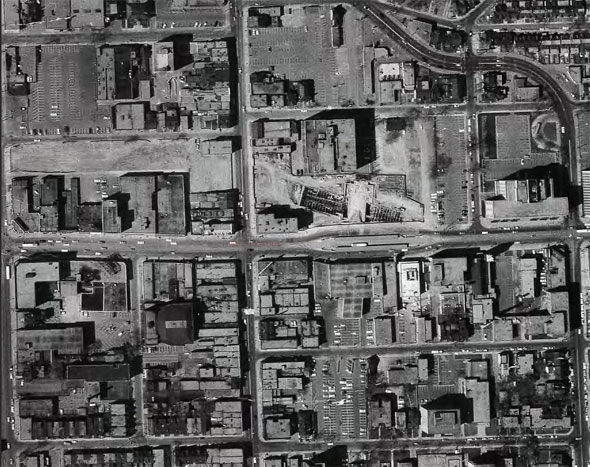
From the air in 1964, showing the complex construction work linking the Bloor-Danforth and existing Yonge subway line. Empty patches of land and parking lots reveal the path of the underground tunnels.
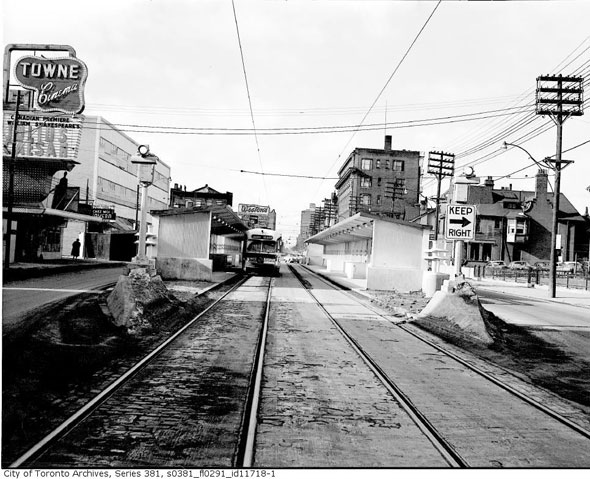
Built at the same time as the Yonge subway line on Bloor just east of the intersection with Yonge, the streetcar platforms provided direct access to the underground platforms via a set of stairs. This photo, which was actually taken in the 1950s, looks west towards Yonge and Bloor.
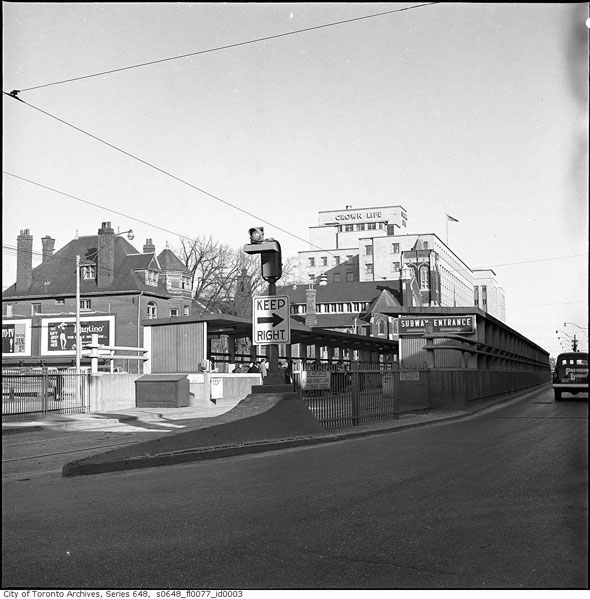
Unlike similar streetcar platforms on Queen and College streets, this one was entirely car-free. Private vehicles had to go around the outside.
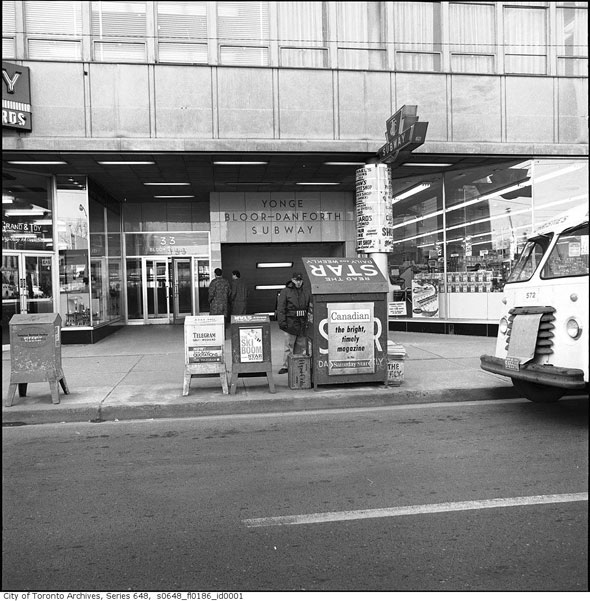
The subway entrance on the south side of Bloor, east of Yonge. Note the Toronto Telegram newspaper box. The paper ceased publication in 1971. A few days later, with many of the Telegram's former staff, the Toronto Sun launched.
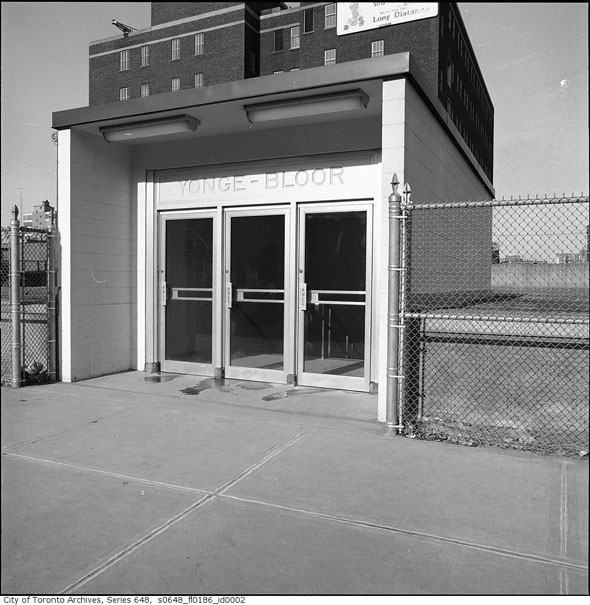
Marooned subway entrance on the north side of Bloor, prior to construction of the Hudson's Bay Centre. The building in the background is the Bell Telephone Company of Canada building on Asquith.
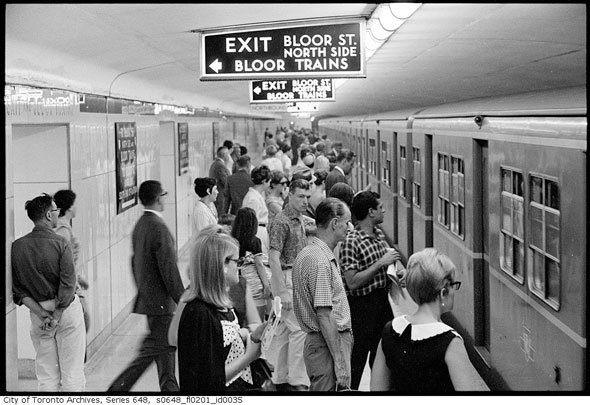
Down below, the original Yonge line platform at Bloor-Yonge could never handle the number of people that use the station today.
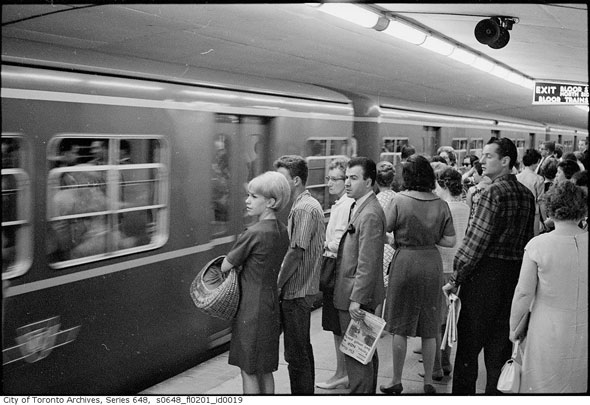
Another shot of the original Yonge line platform beneath Yonge and Bloor in the 1960s, shortly after completion of the Bloor-Danforth line.
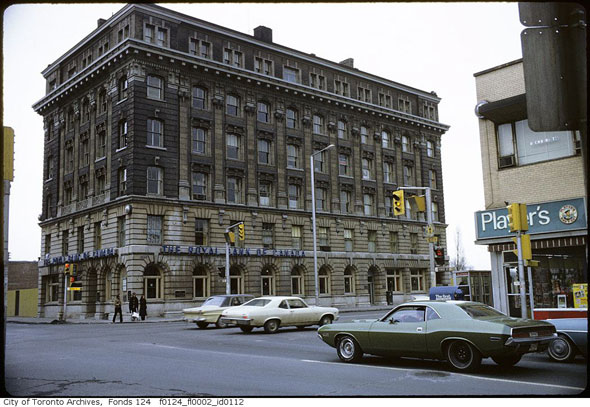
The Bloor-Danforth subway replaced the Bloor-Danforth streetcar in 1966 and, as a result, the city took up the surface platform. This photo, taken shortly after that work was completed, shows the northeast corner of the intersection, where the RBC pavilion is located today.
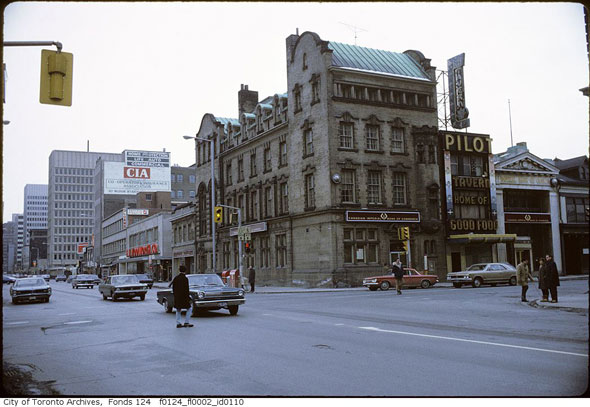
Over the street from the RBC building was a Canadian Imperial Bank of Commerce branch. This building, the Pilot tavern next door, and several others were demolished to make way for the current CIBC tower.
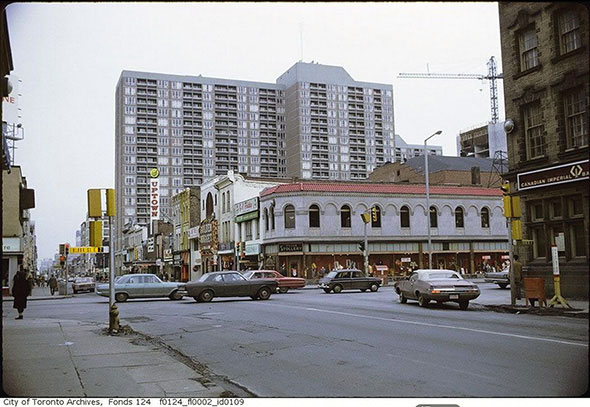
Purple and pink Stollerys at the southwest corner, looking south down Yonge. Apart from the demolition of the historic men's clothing store, the buildings on this side of the street are roughly the same today. The Uptown theatre has closed, though.
Chris Bateman is a staff writer at blogTO. Follow him on Twitter at @chrisbateman.
Images: City of Toronto Archives.
Latest Videos
Latest Videos
Join the conversation Load comments






